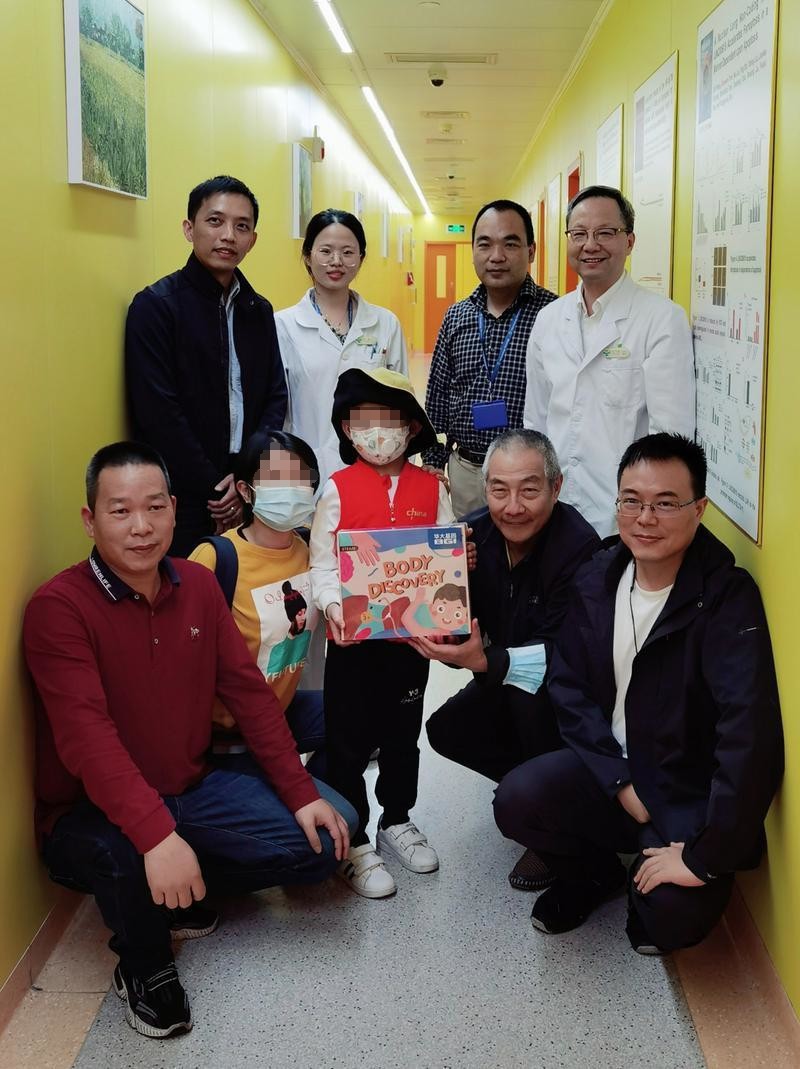In addition to long-term blood transfusion or bone marrow transplantation, are there other treatment options for patients with severe thalassaemia? Have! Since February last year, Shenzhen Children's Hospital has carried out gene therapy based on autologous hematopoietic stem cell transplantation for patients with severe thalassaemia. At present, the two children with severe thalassemia who received treatment have recovered clinically and no longer need blood transfusion. This is also the first case of thalassaemia gene therapy successfully carried out in China based on the b-globin re-expression strategy.
For the treatment of severe thalassaemia, Shen Pediatrics conducts clinical research on gene therapy
"This child is not saved, and can live to be five years old at most." 12 years ago, when she heard this sentence, Ms. Wu cried. Her daughter Yanyan (pseudonym) was diagnosed with thalassemia major when she was eight months old. Since then, the child's face has gradually turned pale, and he has been crying every day. Over the years, blood transfusion and iron removal have been performed. When the blood bank is in a hurry, they have to travel around for blood transfusion treatment. "Wherever they are, they can go there. Dongguan, Foshan, Guangzhou, from once a month to once every 15 days."
Ms. Luo, the mother of the child Yunyun (pseudonym), also had the same experience. When Yunyun was born seven or eight months ago, he was also found to have severe thalassaemia, and he began to embark on a long "blood transfusion road". Ms. Luo said that long-term blood transfusion and iron removal treatment are not only expensive, but also time-consuming and labor-intensive, and the whole family is miserable. After matching for bone marrow transplantation, only haploidentical transplantation can be performed. They have not opted for a bone marrow transplant due to concerns about the risks.
In addition to blood transfusion, bone marrow transplantation, and severe thalassaemia, is there any other way to treat it? At the end of 2020, the clinical study of "β-globin-reexpressed autologous hematopoietic stem cell transplantation for patients with transfusion-dependent β-thalassemia" was carried out in Shenzhen. Shenzhen Children's Hospital, as the first unit in China to carry out this research, has carried out thalassaemia gene therapy based on lentiviral transfection β-globin re-expression strategy for patients with severe thalassemia.
"In May 2019, thalassemia gene therapy products were first launched in Europe. In China, this technology is still in the clinical research stage," said Liu Sixi, director of the Department of Hematology and Oncology at Shenzhen Children's Hospital. The germ cell gene was not changed, and it successfully passed the ethics review of the hospital ethics committee before the project started.
The first domestic case! Two autologous transplant children have said goodbye to blood transfusions
Knowing that Professor Liu Sixi's team's gene therapy clinical research project for thalassemia major, Yunyun and Yanyan's parents finally agreed to join the project after full communication and knowledge with the doctor. On February 8 last year, researchers completed the genetically modified autologous stem cell infusion therapy for the first patient, Yunyun. Subsequently, on May 28 last year, Yanyan also completed her first treatment. Two weeks after the recovery of autologous stem cells, the hemoglobin levels of the two children reached the standard for blood transfusion. After treatment, both children have recovered clinically and no longer need blood transfusion.

On March 23 last year, the child Yunyun (middle) First follow-up after discharge.
"Hematopoietic stem cell transplantation is divided into allogeneic transplantation and autologous transplantation. This new project is to extract the patient's own stem cells, carry out genetic modification, discard problematic genes, re-introduce good genes, and then infuse them back into the patient's body." Liu Sixi introduced, Taking thalassemia treatment as an example, patients cannot produce or produce very few beta globin chains, resulting in an imbalance in the ratio of alpha/beta protein chains, resulting in a series of symptoms. In our clinical research, through the genetic modification of patients, the β-globin chain can be re-synthesized to achieve a balance with the α-protein chain. After re-introduction into the body, the patient can get rid of blood transfusion, and there is no longer a lack of β-globin chain and α/β protein chain imbalance, that is, no longer have thalassaemia symptoms.
Different from allogeneic transplantation, after autologous transplantation, there is no need to take immune preparations, the intensity of chemotherapy is also weakened, and the toxic and side effects are reduced. "More than a decade ago, bone marrow transplantation for thalassemia patients was very difficult. Because many patients lacked homozygous donors, and haploid transplantation was basically not carried out, many patients with severe thalassaemia had no chance of transplantation." Liu Sixi introduced, These patients have long-term blood transfusions, their physical status is affected, and they cannot tolerate the intensity of chemotherapy, so there is no chance for allogeneic transplantation. At present, thalassaemia gene therapy based on autologous hematopoietic stem cell transplantation is still in the clinical research stage in China. When gene therapy matures in the future, the majority of patients are expected to achieve "poverty alleviation" through autologous transplantation.
Reporter: Yao Huiping
Editor: Fan Shaohua
